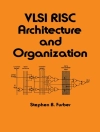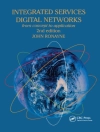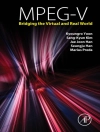* The key technology to delivering maximum bandwidth over
networks is Dense Wave-length Division Multiplexing (DWDM)
* Describes in detail how DWDM works and how to implement a range
of transmission protocols
* Covers device considerations, the pros and cons of various
network layer protocols, and quality of service (Qo S) issues
* The authors are leading experts in this field and provide
real-world implementation examples
* First book to describe the interplay between the physical and
IP (Internet Protocol) layers in optical networks
Inhoudsopgave
Contributors.
Preface.
Chapter 1. IP-over-WDM Convergence (S. Dixit).
Chapter 2. Protocol Design Concepts, TCP/IP, and the Network
Layer (S. Kalyanaraman & B. Sikdar).
Chapter 3. Optical Enabling Technologies for WDM Systems (A.
Tervonen).
Chapter 4. Electro-optic and Wavelength Conversion (B.
Ramamurthy).
Chapter 5. Contention Resolution in Optical Packet Switching (S.
Yao, et al.).
Chapter 6. Advances toward Optical Subwavelength Switching (S.
Yao, et al.).
Chapter 7. Multiprotocol over WDM in the Access and Metropolitan
Networks (M. Gagnaire).
Chapter 8. Ethernet Passive Optical Networks (G. Kramer, et
al.).
Chapter 9. Terabit Switching and Routing Network Elements (T.
Wang & S. Dixit).
Chapter 10. Optical Network Engineering (G. Rouskas).
Chapter 11. Traffic Management for IP-over-WDM Networks (J.
Aracil, et al.).
Chapter 12. IP- and Wavelength-Routing Networks (R. Gangopadhyay
& S. Dixit).
Chapter 13. Internetworking Optical Internet and Optical Burst
Switching (M. Yoo & Y. Kim).
Chapter 14. IP-over-WDM Control and Signaling (C. Xin, et
al.).
Chapter 15. Survivability in IP-over-WDM Networks (Y. Ye &
S. Dixit).
Chapter 16. Optical Internetworking Models and Standards
Directions (Y. Cao & R. Barry).
Index.
Over de auteur
SUDHIR S. DIXIT, Ph D, is a Senior Research Manager at the Nokia Research Center in Burlington, Massachussetts.












